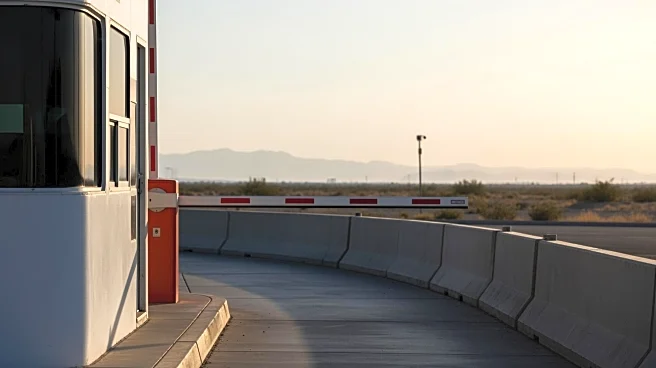What's Happening?
The Supreme Court has agreed to review the controversial 'metering' policy, which allows Customs and Border Protection officers to limit the number of asylum seekers who can physically enter the U.S. at
the Mexico border during busy periods. This policy, formalized during President Trump's first administration, was rolled back by the Biden administration but exceptions were allowed. The current administration seeks to revive the practice, arguing it is essential for managing surges at the border. The policy has faced legal challenges, with lower courts ruling that federal law permits migrants to seek asylum once they reach U.S. territory. The case, brought by thirteen asylum seekers and the immigrant rights group Al Otro Lado, claims the policy is illegal and endangers vulnerable migrants.
Why It's Important?
The Supreme Court's decision on the 'metering' policy could significantly impact U.S. immigration practices and the treatment of asylum seekers. If upheld, the policy may restrict access to asylum for many migrants, potentially leading to increased humanitarian concerns at the border. Conversely, striking down the policy could affirm broader rights for asylum seekers, influencing future border management strategies. The ruling will affect how the U.S. balances border security with international obligations to protect those fleeing persecution, impacting political discourse and immigration policy.
What's Next?
The Supreme Court is expected to hear arguments on the case next year, with a decision anticipated by June. The outcome will likely prompt reactions from immigration advocates, policymakers, and international observers. Depending on the ruling, the administration may need to adjust its border management strategies, potentially influencing legislative efforts to address immigration reform.
Beyond the Headlines
The case highlights ongoing debates over the interpretation of immigration laws and the balance between national security and humanitarian obligations. It underscores the challenges of managing the U.S.-Mexico border amid fluctuating migration patterns and political pressures. The decision could set a precedent for how similar policies are evaluated in the future, affecting the legal landscape of U.S. immigration.













